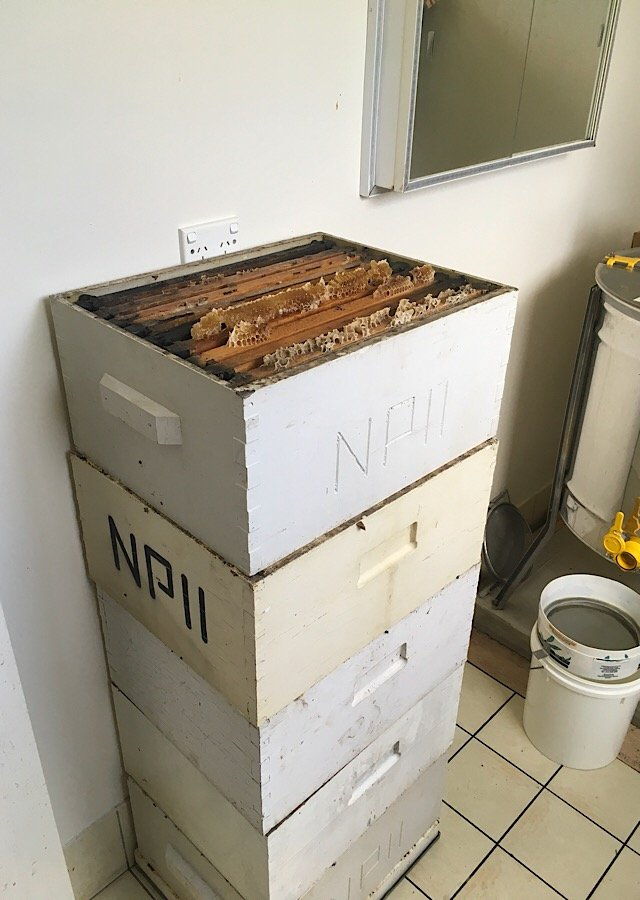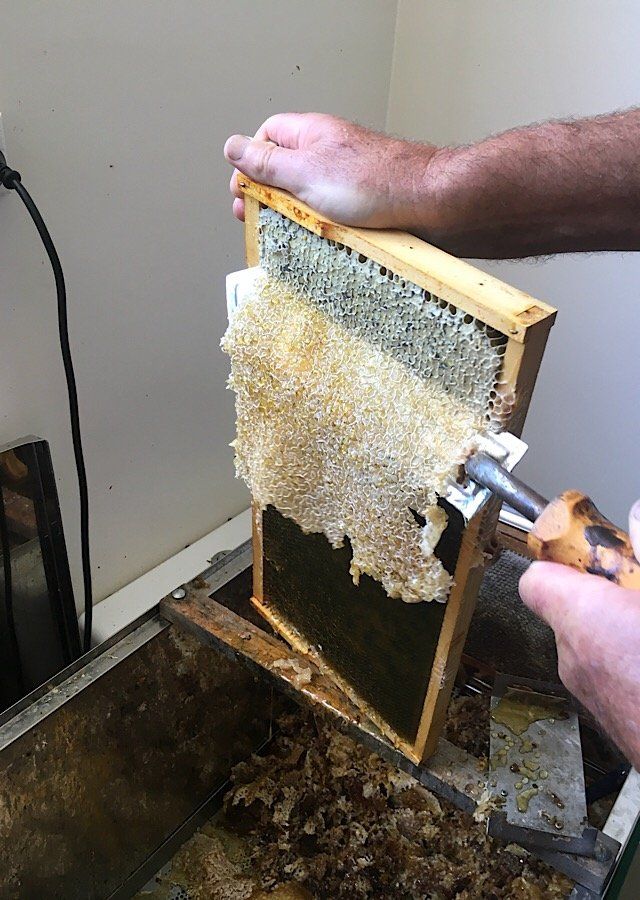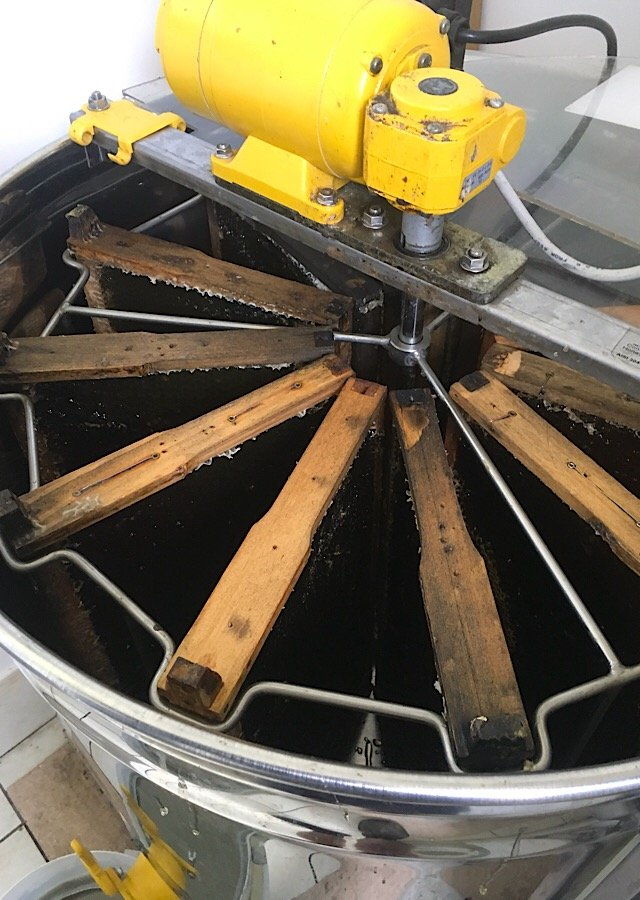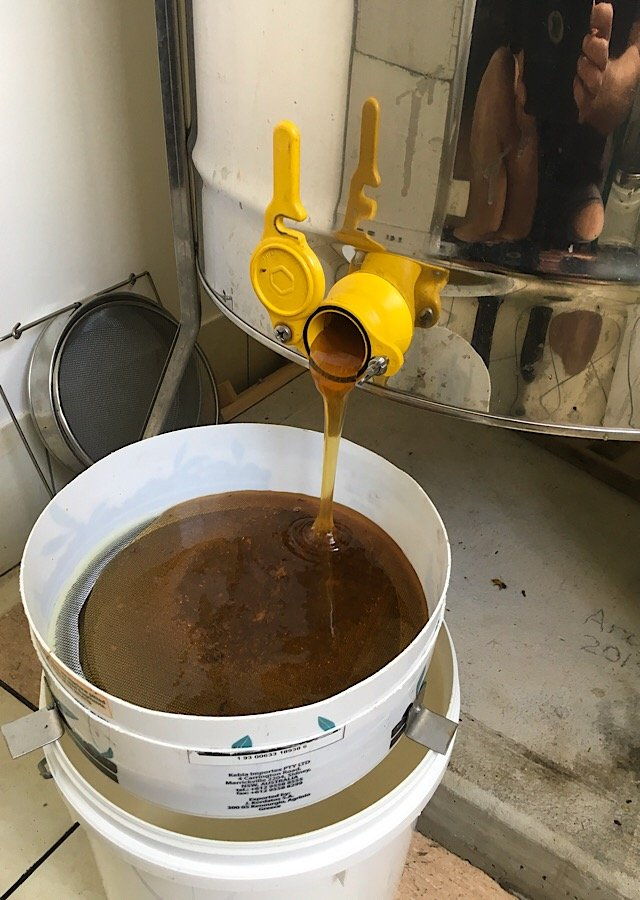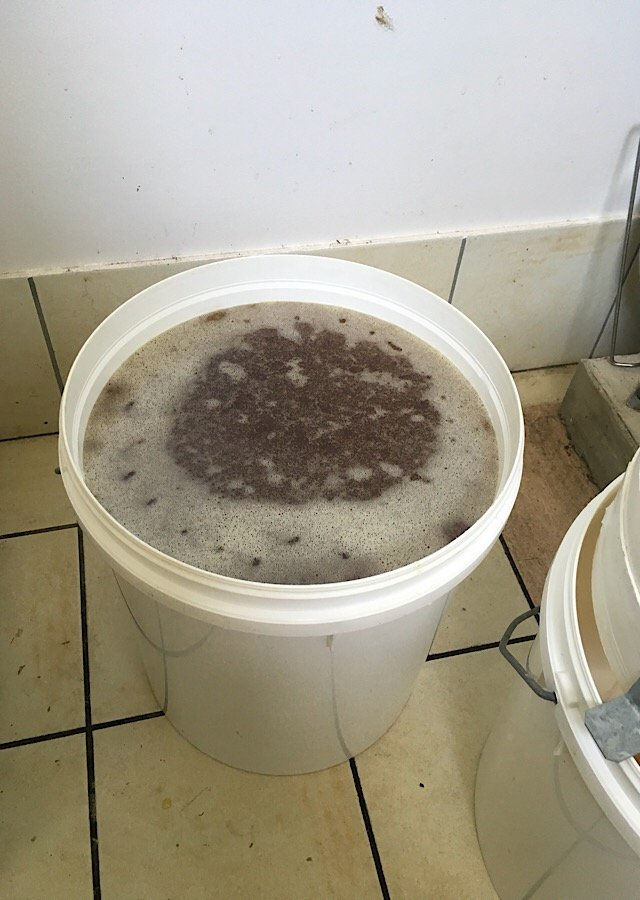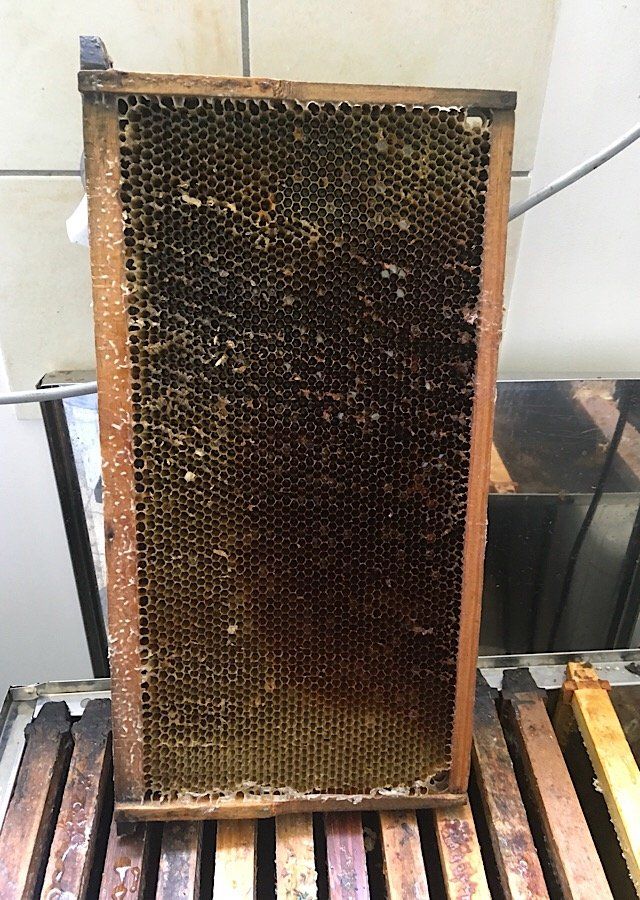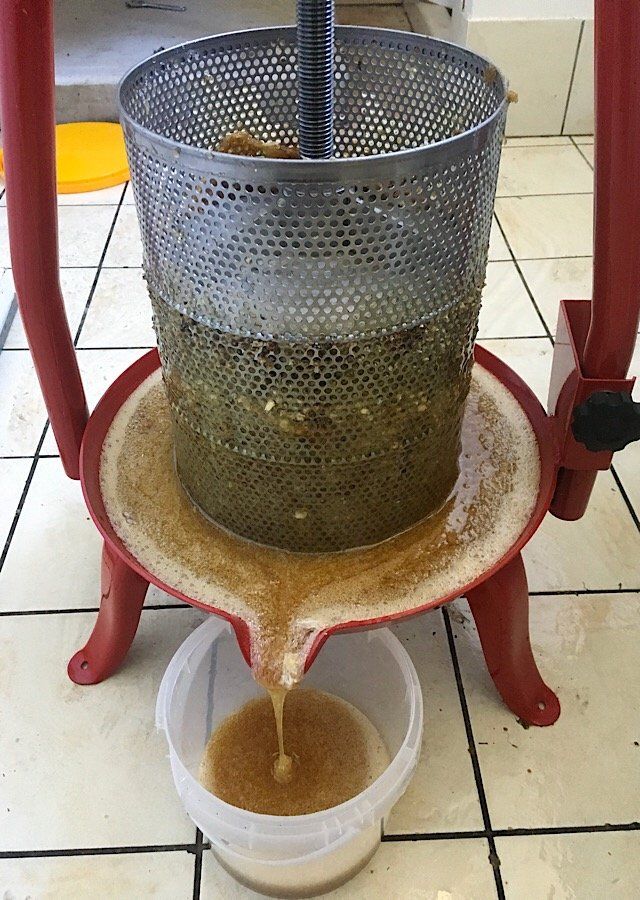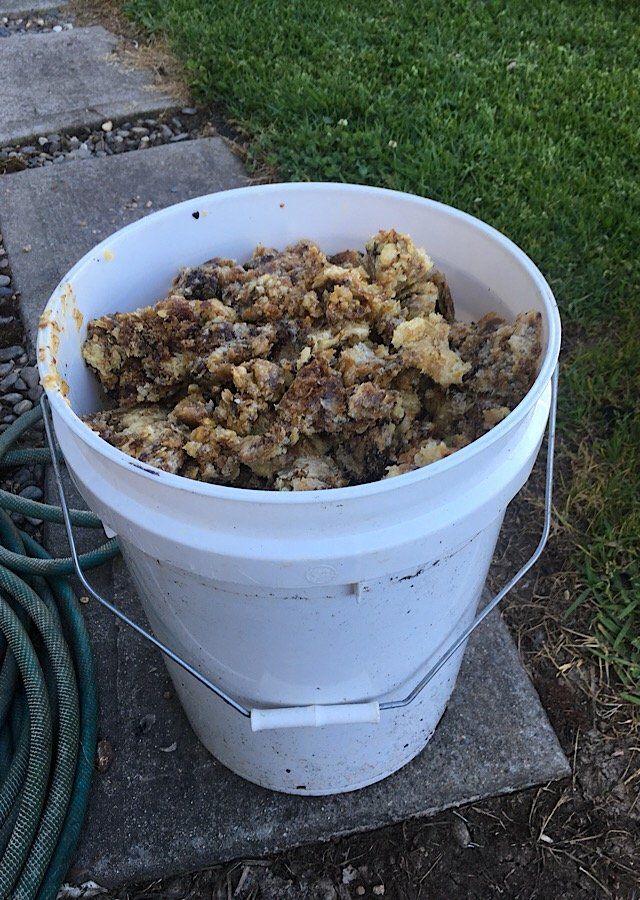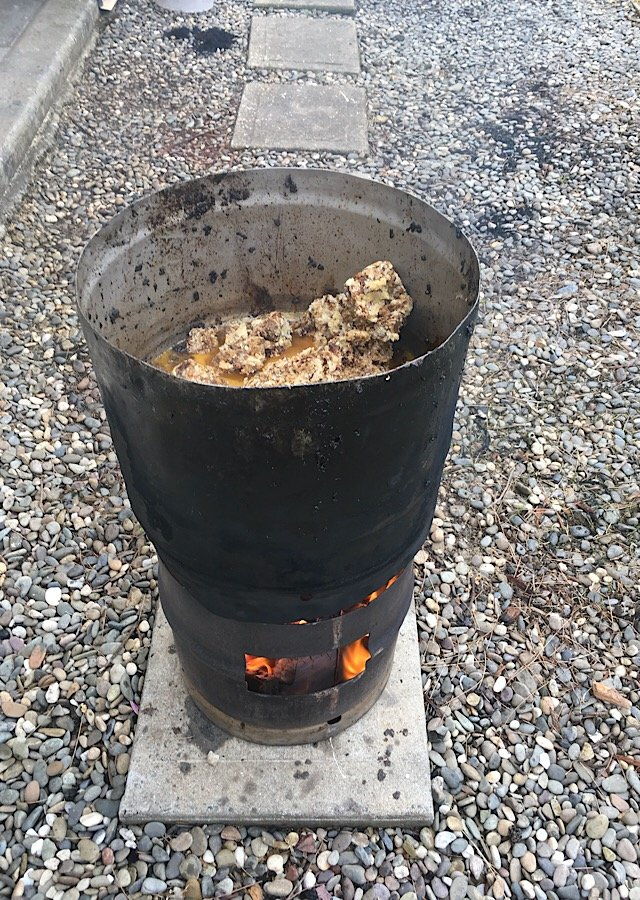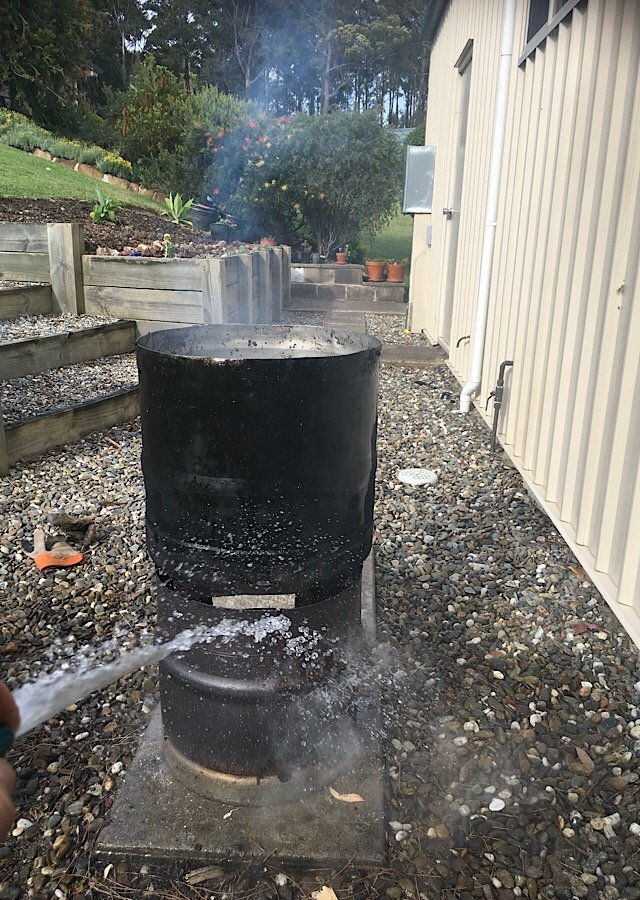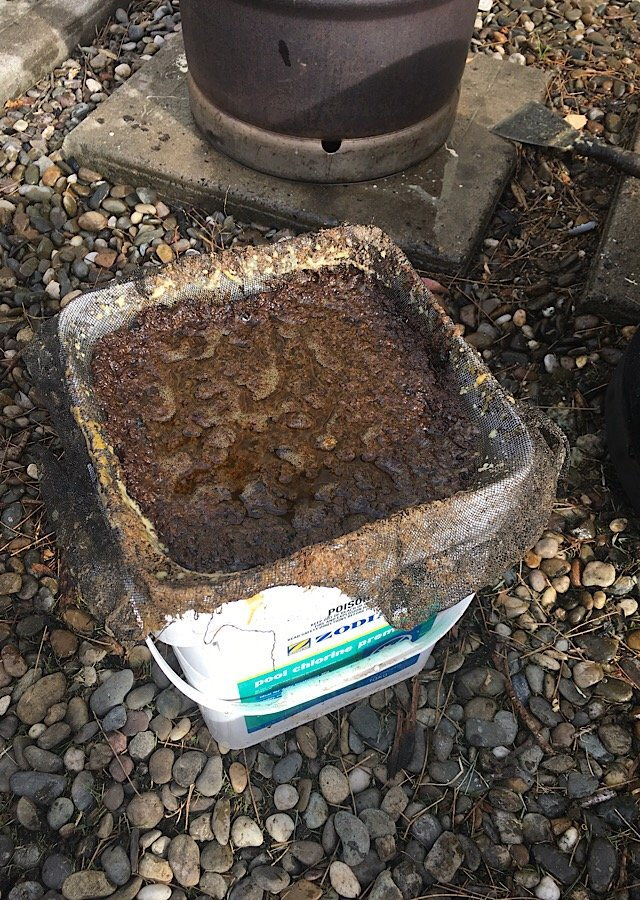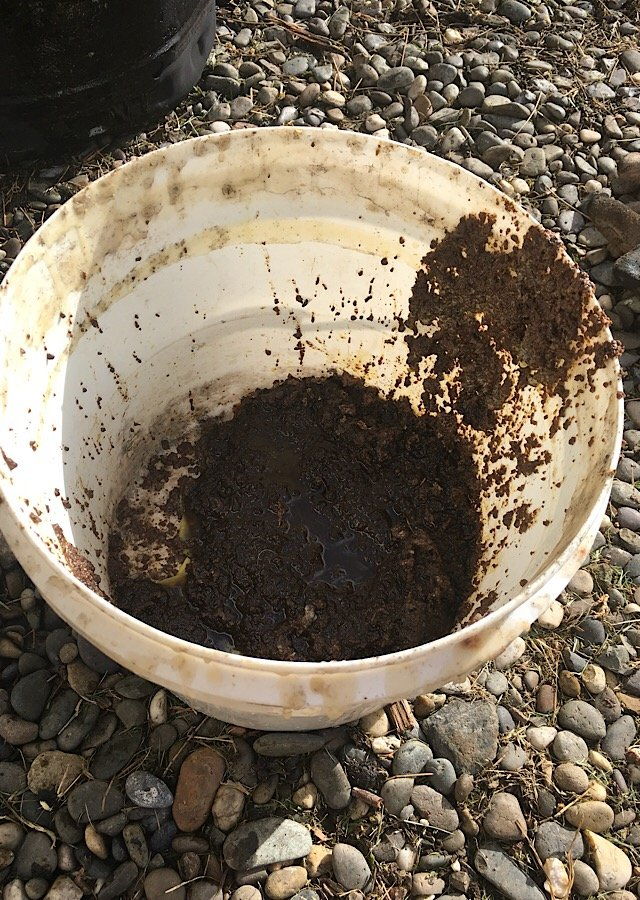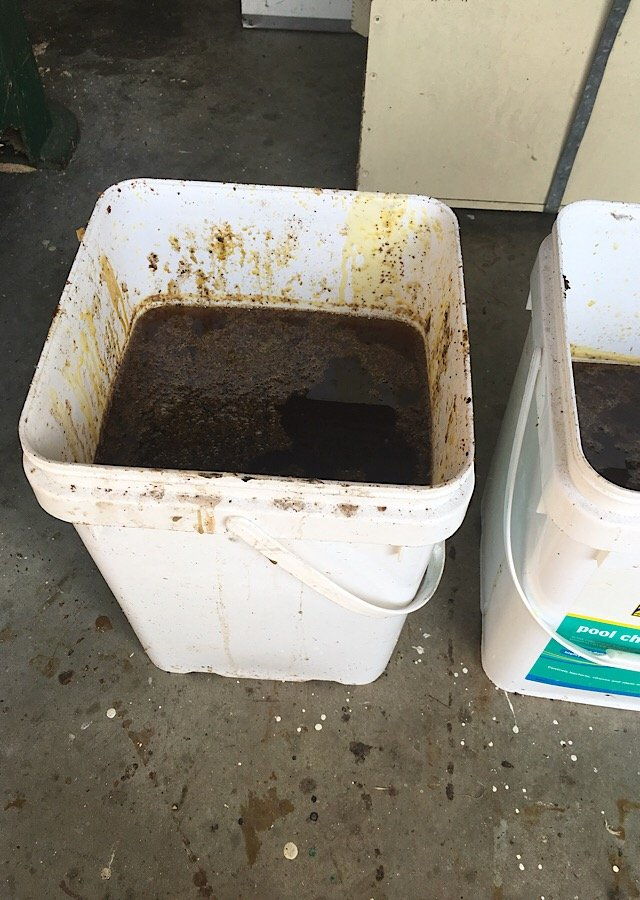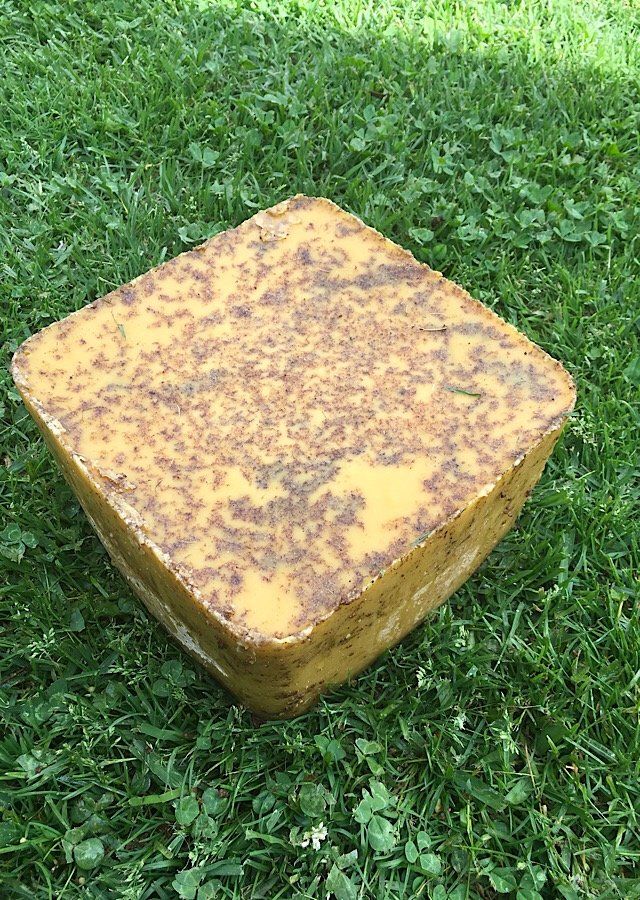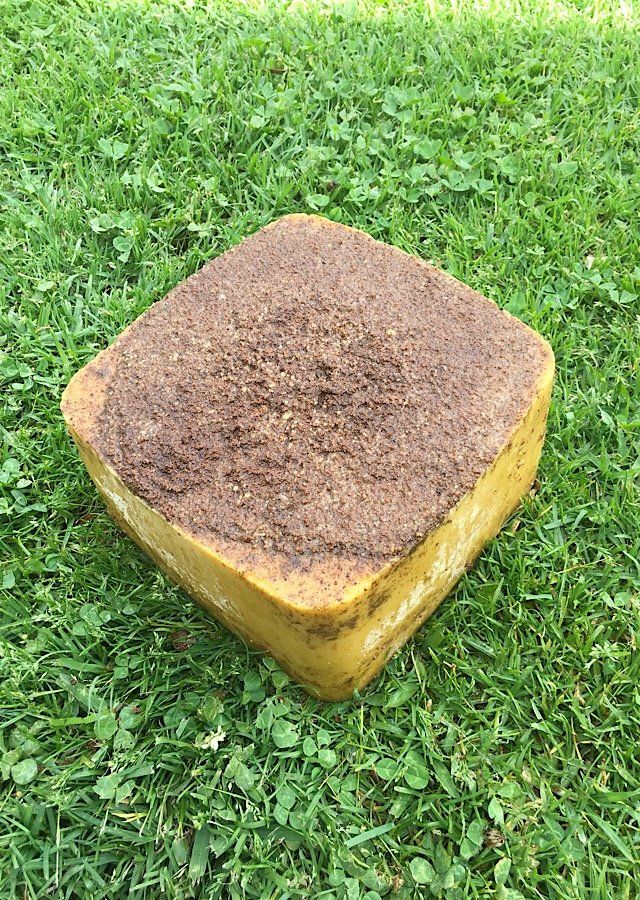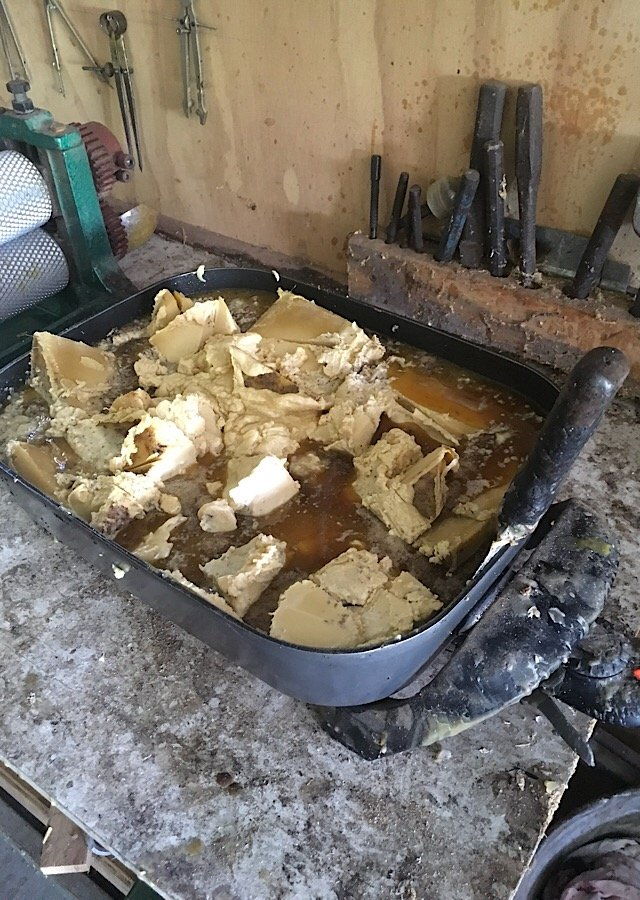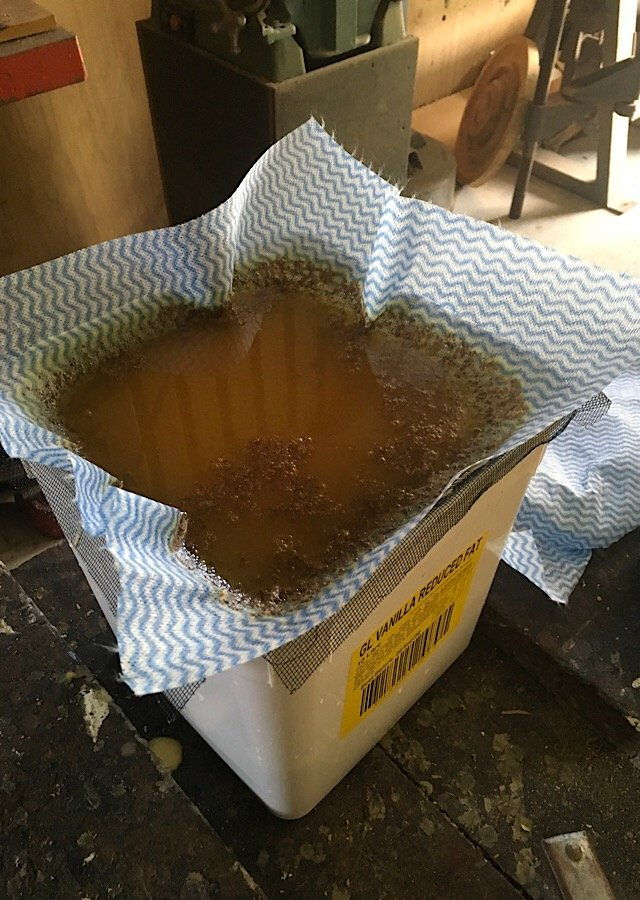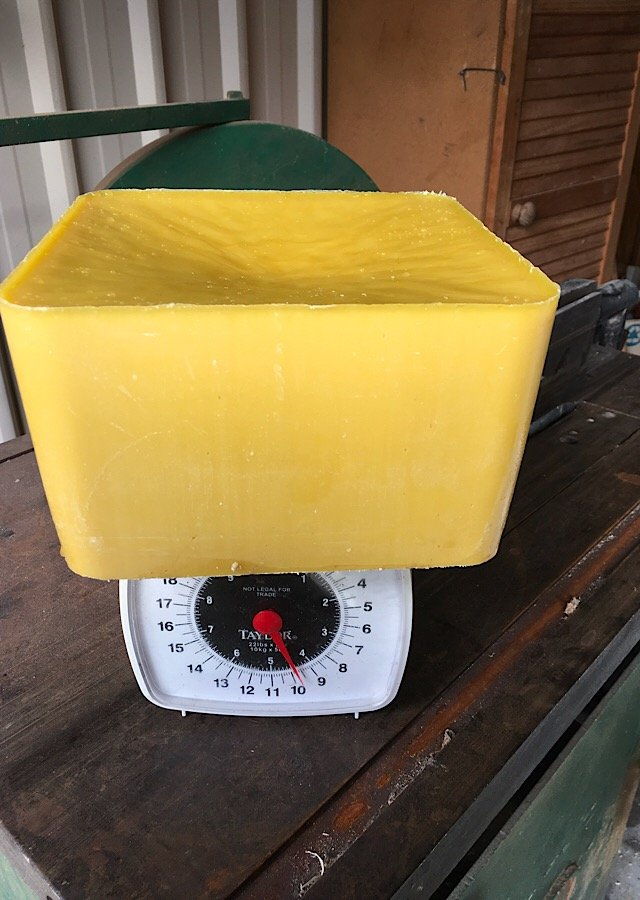Hi Folks,
Another cool day with no chance of getting into the bees. The two swarms that were hived yesterday stayed put and didnt abscond this morning. Ill allow them to draw some comb, build up in numbers and then combine them with the hives that they swarmed from. Will kill the old queen before doing so as the two queens will fight when the hives are joined. Will need to make sure that the new queen is laying well and the swarm period is finished. Should be right to go in about a month or so. This should result in big, strong hives which will produce more honey than smaller weaker hives.
Spent some time in the shed making up frames and also producing some wax foundation. Thought Id run you through the process that I use for making the foundation. The first step is to melt some wax to make the sheets. I use a double gas burner to heat rain water in a large stainless container. A wax block is broken down into small chunks and slowly heats and melts as the water warms. (You will probably recognise the pot used to hold the wax/ water mix.)
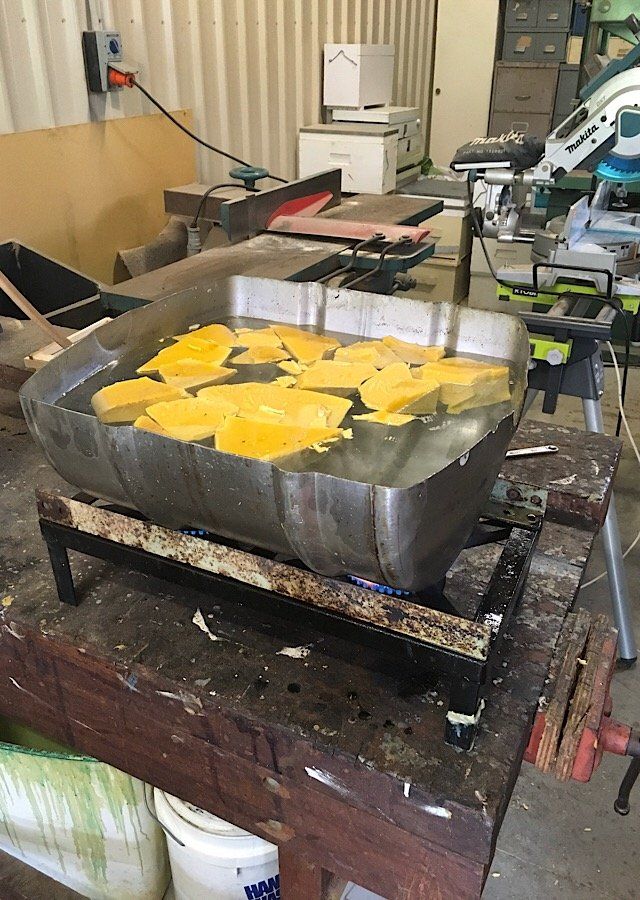
The wax floats on top of the water and eventually melts.
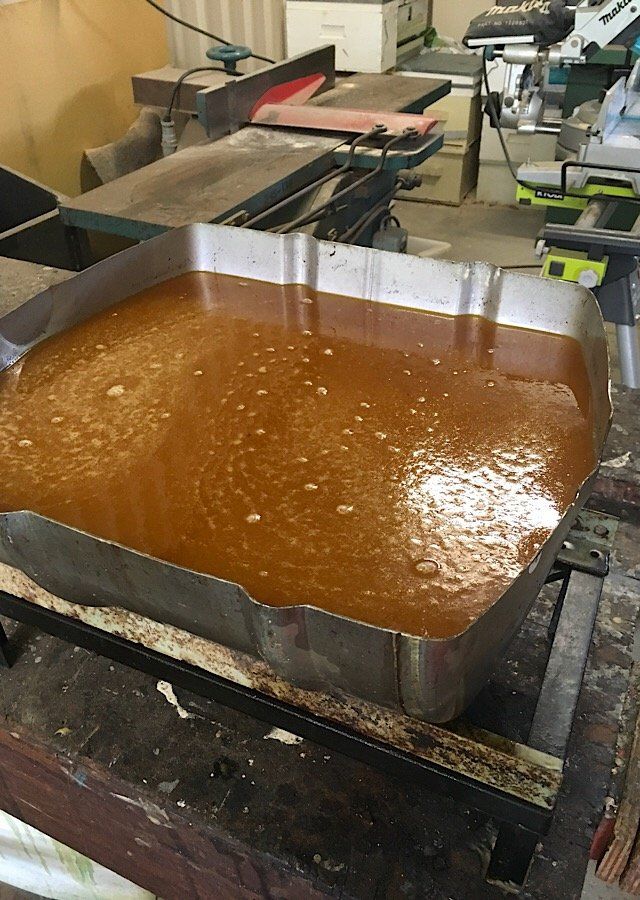
When the temp of the water is just below boiling point, the wax is hot enough to produce flat sheets. I have two paddles that I use to make the foundation sheets (they are a bit like wooden cement floats only larger) The paddles are placed in a tub of water for ten minutes or so. A squirt of dishwashing liquid helps to act as a release agent so the wax does not stick to the paddle. They are dipped into the wax on an angle and then showly brought down to the horizontal position.
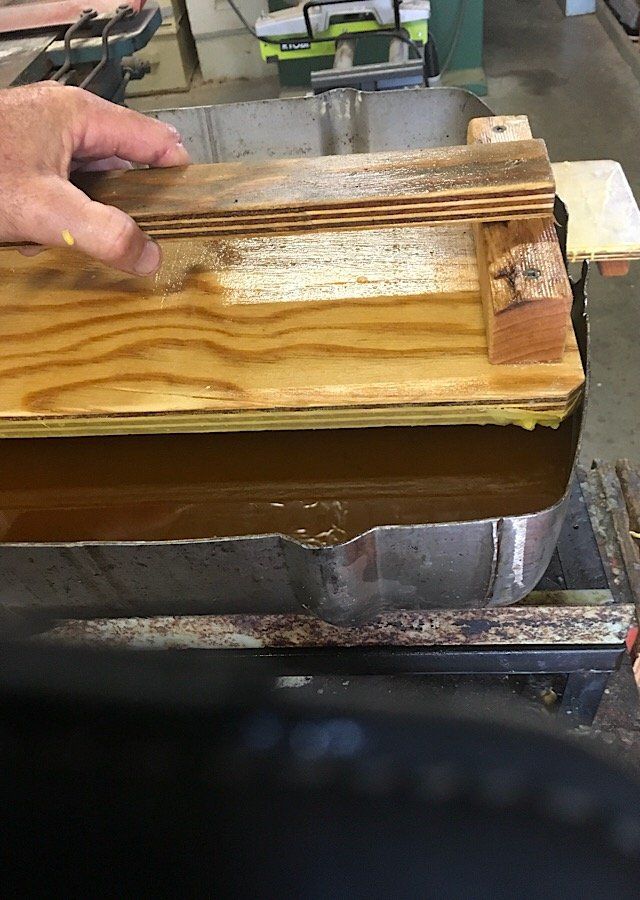
After sitting on the surface of the wax for about two seconds, the paddle is removed from the wax and quickly turned through 180 degrees. The wax is then allowed to dry for about ten seconds or so.
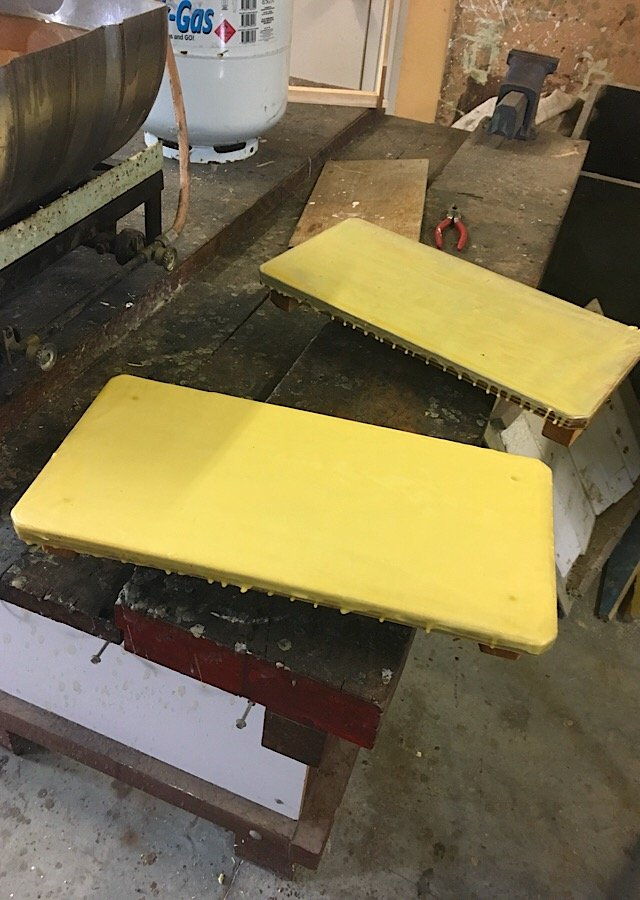
Each paddle is dipped three times to give the wax thickness required. The paddle is then placed into the water bath where the wax sheet easily slides off.
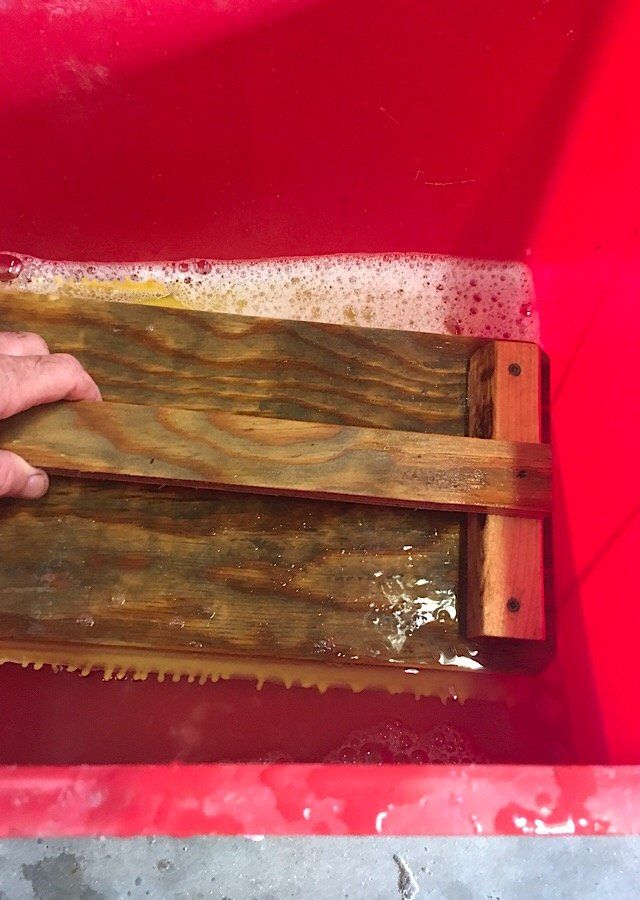
The water needs to be at about 35 degrees to keep the wax pliable. After 30 to 40 sheets are made, the wax is then run though an embossing mill to put the hexagonal cell shape on to each piece.
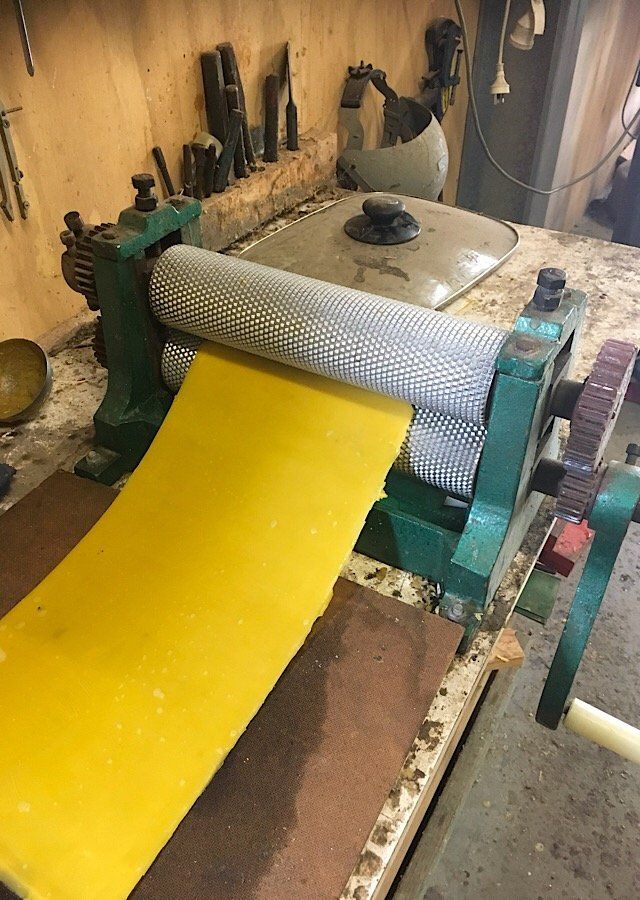
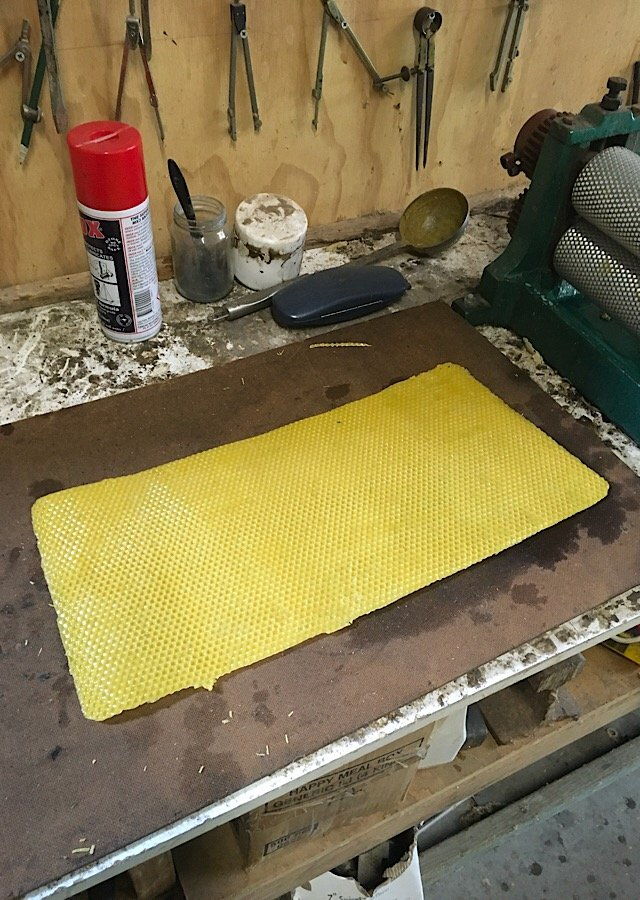
Each sheet is then trimmed to size. A pizza cutter and a ply template make this operation a simple task. Using my own wax gives me control over the quality of the end product, value adds to the wax that I produce and provides me with a bit of work on those wet days where you cant do much outside.
Cheers for now
Les
Another cool day with no chance of getting into the bees. The two swarms that were hived yesterday stayed put and didnt abscond this morning. Ill allow them to draw some comb, build up in numbers and then combine them with the hives that they swarmed from. Will kill the old queen before doing so as the two queens will fight when the hives are joined. Will need to make sure that the new queen is laying well and the swarm period is finished. Should be right to go in about a month or so. This should result in big, strong hives which will produce more honey than smaller weaker hives.
Spent some time in the shed making up frames and also producing some wax foundation. Thought Id run you through the process that I use for making the foundation. The first step is to melt some wax to make the sheets. I use a double gas burner to heat rain water in a large stainless container. A wax block is broken down into small chunks and slowly heats and melts as the water warms. (You will probably recognise the pot used to hold the wax/ water mix.)

The wax floats on top of the water and eventually melts.

When the temp of the water is just below boiling point, the wax is hot enough to produce flat sheets. I have two paddles that I use to make the foundation sheets (they are a bit like wooden cement floats only larger) The paddles are placed in a tub of water for ten minutes or so. A squirt of dishwashing liquid helps to act as a release agent so the wax does not stick to the paddle. They are dipped into the wax on an angle and then showly brought down to the horizontal position.

After sitting on the surface of the wax for about two seconds, the paddle is removed from the wax and quickly turned through 180 degrees. The wax is then allowed to dry for about ten seconds or so.

Each paddle is dipped three times to give the wax thickness required. The paddle is then placed into the water bath where the wax sheet easily slides off.

The water needs to be at about 35 degrees to keep the wax pliable. After 30 to 40 sheets are made, the wax is then run though an embossing mill to put the hexagonal cell shape on to each piece.


Each sheet is then trimmed to size. A pizza cutter and a ply template make this operation a simple task. Using my own wax gives me control over the quality of the end product, value adds to the wax that I produce and provides me with a bit of work on those wet days where you cant do much outside.
Cheers for now
Les




